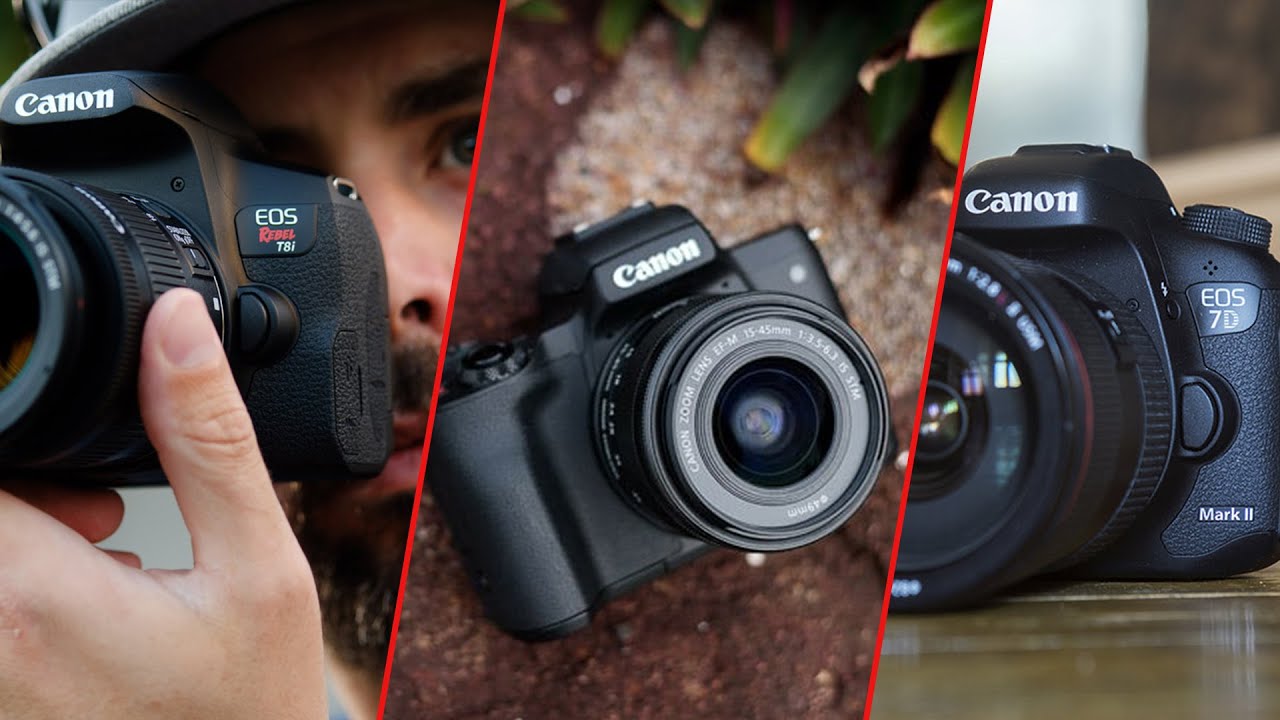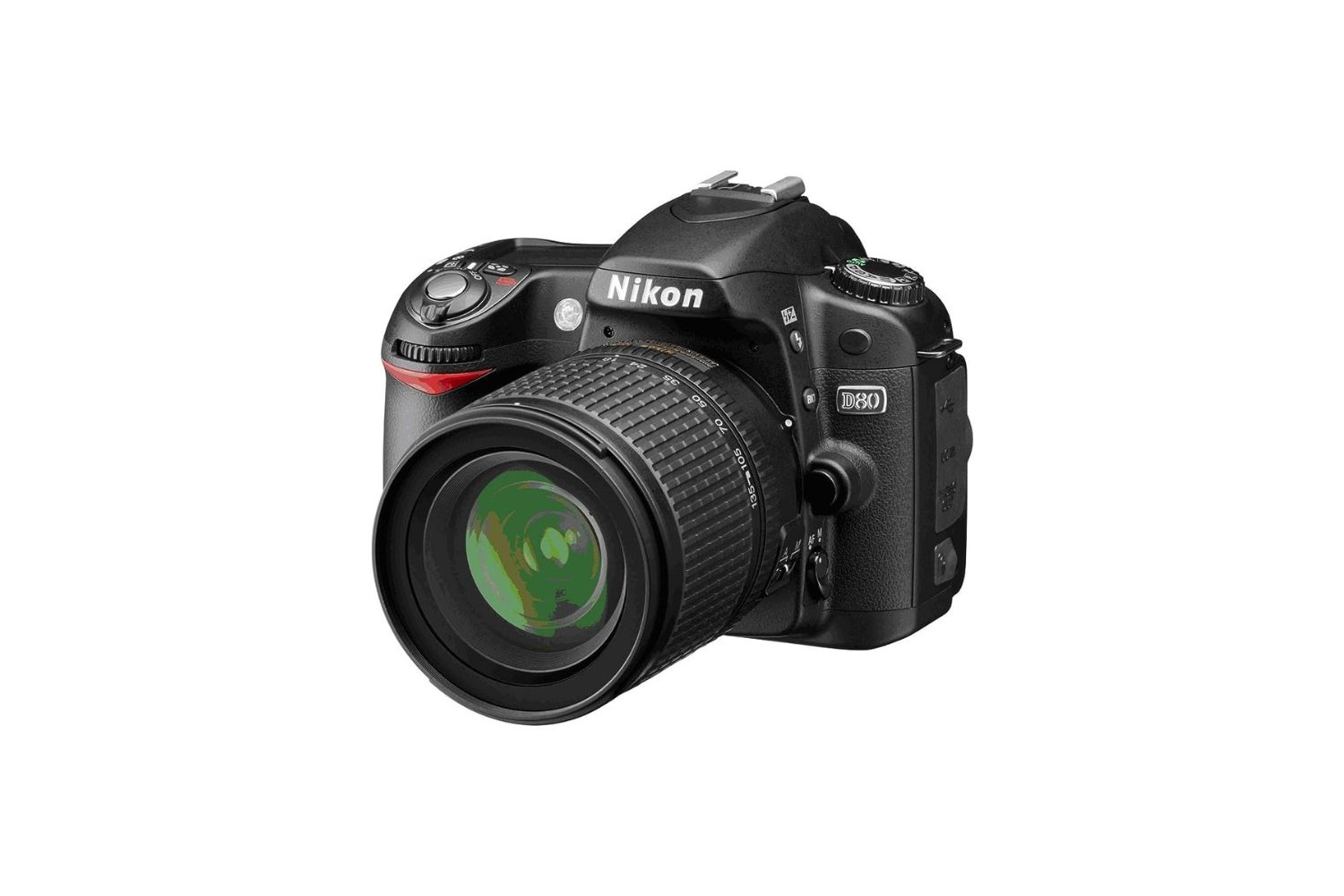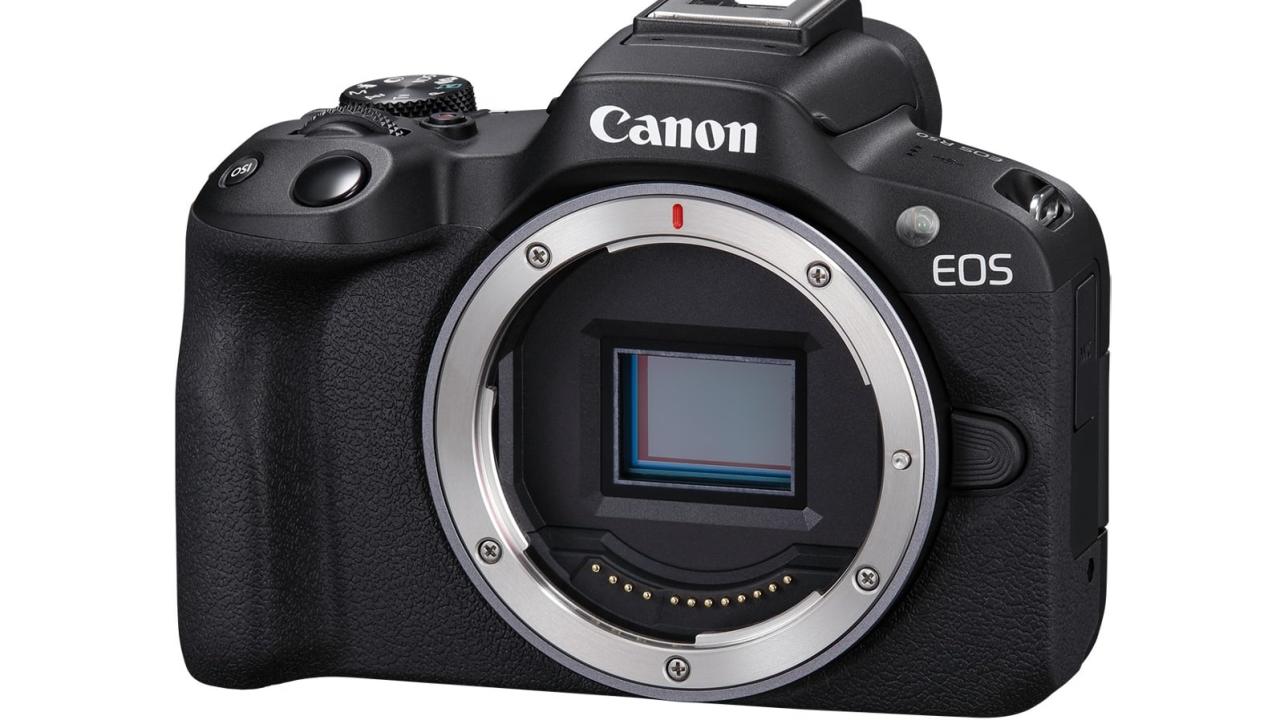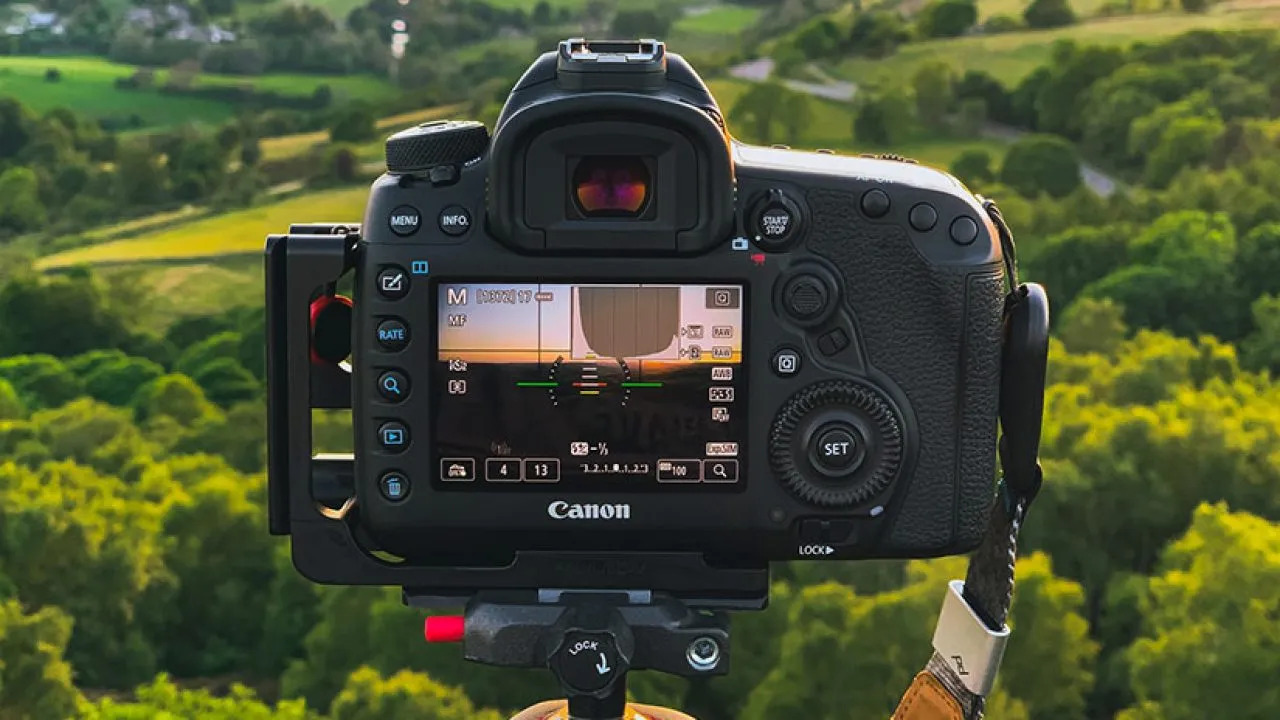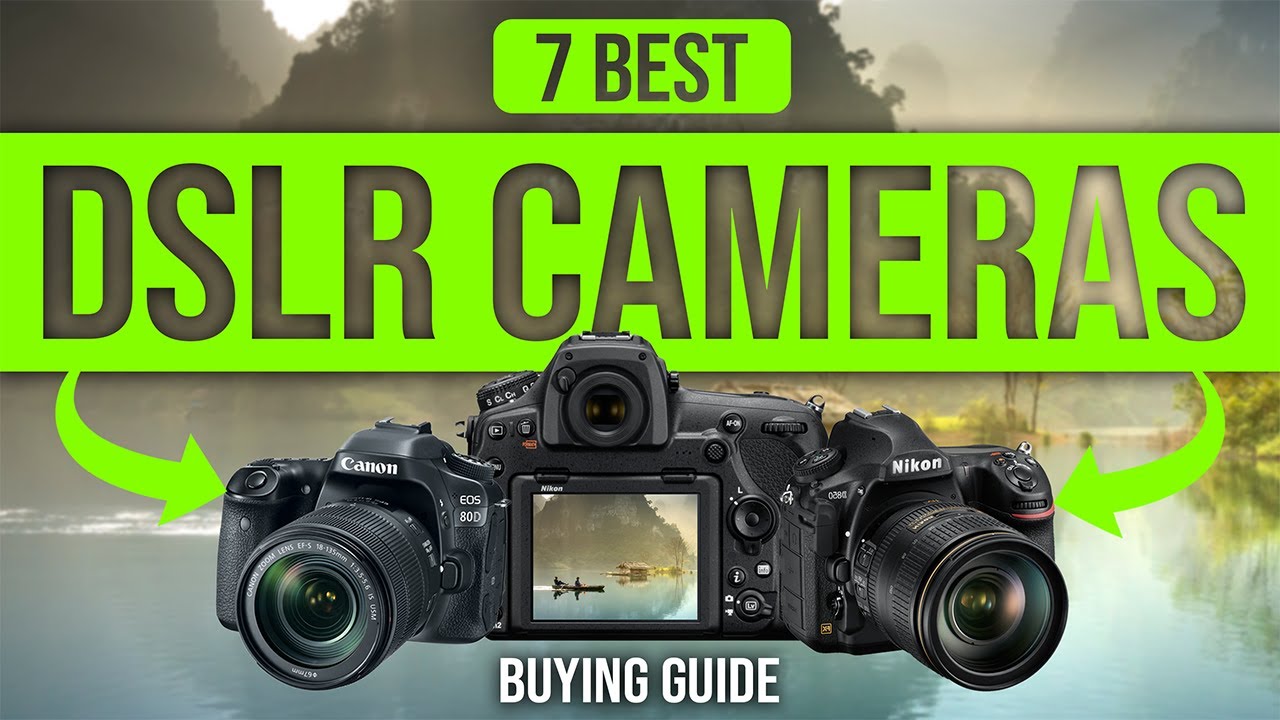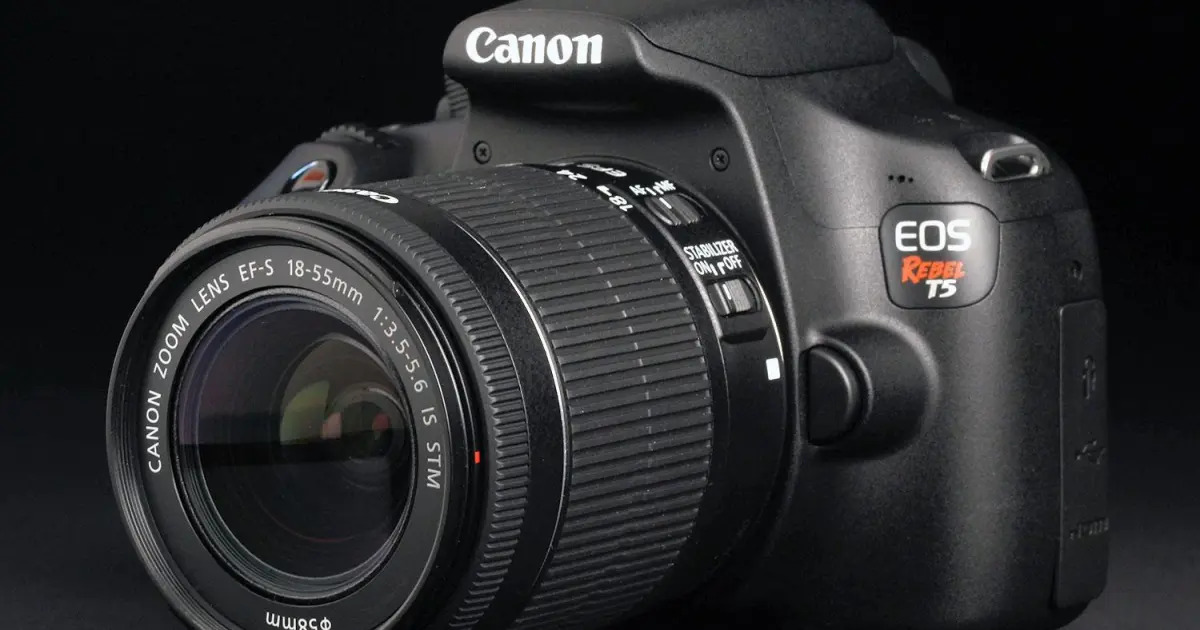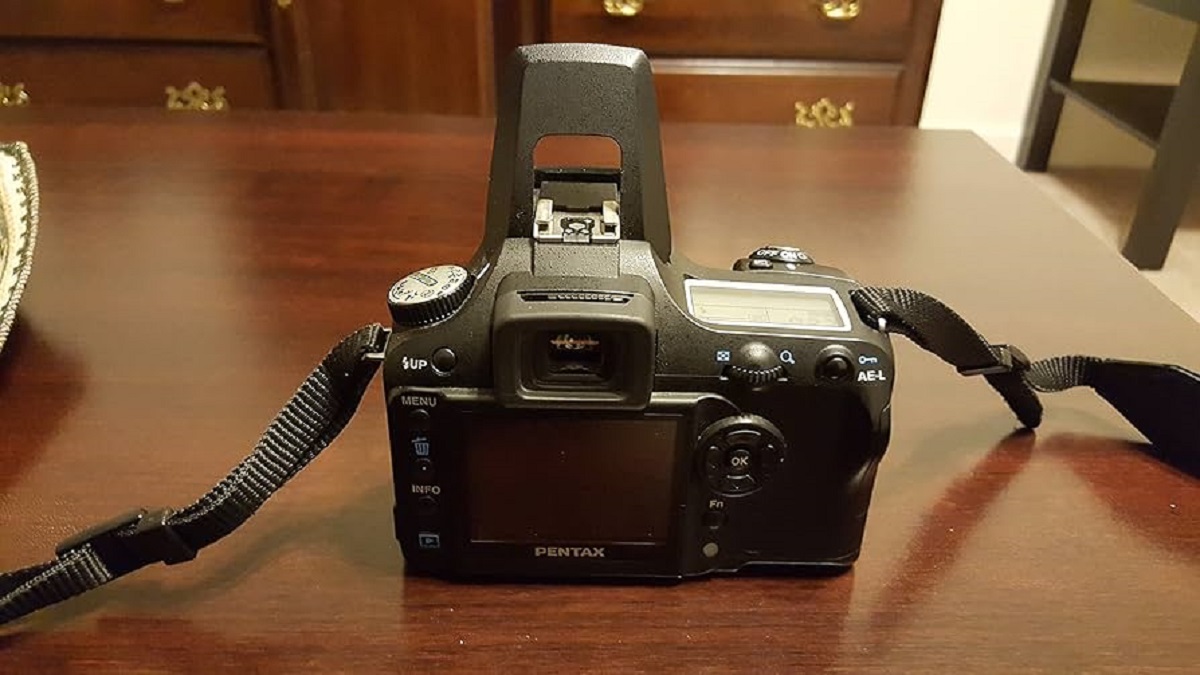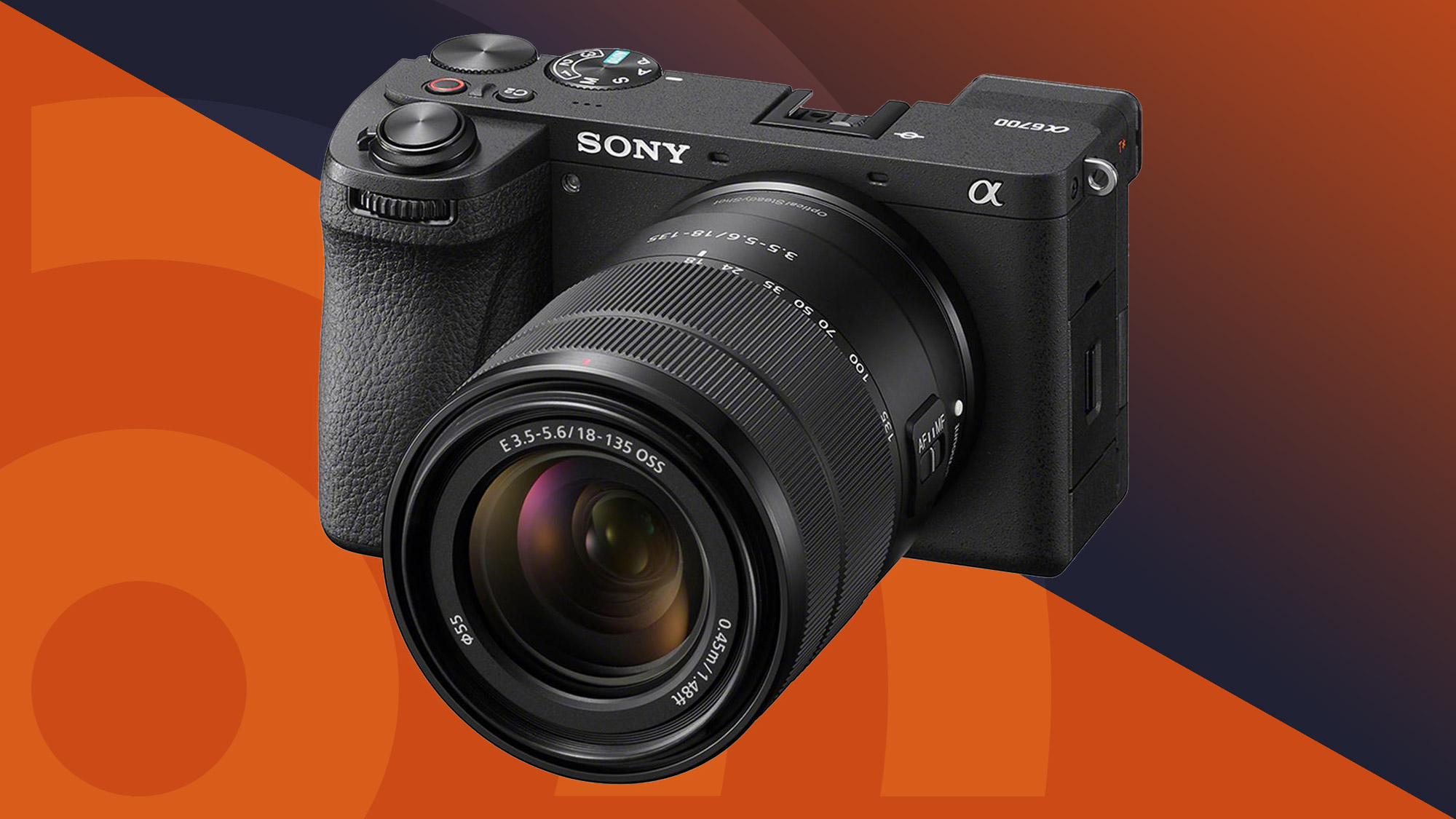Introduction
Welcome to the world of digital SLR cameras! As a beginner, it’s important to choose the right camera that suits your needs and helps you explore the fundamentals of photography. A digital SLR camera, also known as a DSLR, offers a versatile and powerful tool for capturing stunning images.
With so many options available in the market, it can be overwhelming to find the perfect beginner’s digital SLR camera. That’s why we’ve put together this guide to help you navigate through the key factors to consider when making your decision.
When it comes to photography, image quality is paramount. A good digital SLR camera offers high resolution and sharpness, allowing you to capture every detail in your photos. The camera body and controls should be comfortable and intuitive to use, as this will greatly enhance your shooting experience.
An interchangeable lens system is a key feature to look for in a beginner’s digital SLR camera. This allows you to experiment with different lenses, such as wide-angle and telephoto, and explore various photography styles. It adds versatility and expands your creative possibilities.
The autofocus system and shooting modes are important considerations, especially for beginners. Look for a camera with fast and accurate autofocus, as this will ensure that your subjects are sharp and well-focused. Additionally, consider the shooting modes available, such as aperture priority, shutter priority, and fully automatic, to assist you in capturing the desired shot.
A camera’s low light performance is crucial, especially if you plan on shooting in challenging lighting conditions. Look for a beginner’s digital SLR camera that offers good ISO performance, as this will allow you to capture well-exposed images even in low light situations.
If you have an interest in videography, consider the video capabilities of the camera. Look for one that offers high-quality video recording, manual control options, and external microphone support, as this will allow you to create professional-looking videos.
Battery life and storage capacity are also important factors to consider. A camera with long battery life ensures that you can shoot for extended periods without interruptions. Additionally, look for a camera that supports expandable storage, such as SD cards, to accommodate your growing collection of photos and videos.
Finally, the price range of beginner’s digital SLR cameras varies widely. Set a budget that suits your needs and explore the options available within that range. It’s important to find a balance between affordability and the features you desire.
In the next sections, we will explore some popular options for beginner’s digital SLR cameras and provide more insights to help you make an informed decision. So, let’s dive in and find the perfect camera to kick-start your photographic journey!
Factors to Consider When Choosing a Beginner’s Digital SLR Camera
When it comes to selecting a beginner’s digital SLR camera, there are several factors that you should consider. Each factor plays a significant role in determining the overall performance and usability of the camera. Let’s take a closer look at these factors to help you make an informed decision:
- Image Quality and Resolution: One of the most important factors to consider is the camera’s image quality and resolution. Look for a camera that offers high resolution, typically measured in megapixels, as this affects the level of detail in your photos. Cameras with higher resolution produce sharper and more vibrant images, allowing you to capture every detail with precision.
- Camera Body and Controls: The camera body and controls should feel comfortable and intuitive in your hands. Consider the size, weight, and ergonomics of the camera to ensure that it feels right for you. Additionally, pay attention to the placement and accessibility of the buttons and dials, as this will affect how easily you can access and adjust settings while shooting.
- Interchangeable Lens System: A key feature of digital SLR cameras is the ability to interchange lenses. This offers versatility and allows you to experiment with different focal lengths and types of lenses. Consider the availability and variety of lenses compatible with the camera you’re considering, as this will impact your ability to explore different photography styles.
- Autofocus and Shooting Modes: The autofocus system of a camera is crucial for capturing sharp and well-focused images. Look for a camera with a fast and accurate autofocus system, especially if you plan on shooting subjects that require quick focusing, such as wildlife or sports. Additionally, consider the shooting modes available, such as manual, aperture priority, and shutter priority, to cater to your shooting preferences and needs.
- Low Light Performance: If you anticipate shooting in low light conditions, pay attention to the camera’s low light performance. Look for a camera that offers good ISO performance, as this will enable you to capture well-exposed photos even in dimly lit environments. Consider the maximum ISO range and noise reduction capabilities of the camera to ensure high-quality images in low light situations.
- Video Capabilities: If you have an interest in videography, consider the video capabilities of the camera. Look for features such as high-quality video recording, manual control options, and external microphone support. These features will allow you to capture professional-looking videos with enhanced audio quality.
- Battery Life and Storage Capacity: A camera with long battery life is essential, especially if you plan on shooting for extended periods. Look for cameras with reliable battery performance to avoid frequent recharges or running out of power in the middle of a shoot. Additionally, consider the storage capacity of the camera, whether it has built-in storage or supports expandable memory cards, to accommodate your growing collection of photos and videos.
- Price Range: Determine your budget for a beginner’s digital SLR camera and explore options within that range. Consider the features and specifications that are most important to you, and find a camera that offers a balance between affordability and functionality.
By considering these factors and understanding your specific needs as a beginner photographer, you can make an informed decision and find a digital SLR camera that suits your requirements. In the following sections, we will explore some popular options for beginner’s digital SLR cameras to help you narrow down your choices and find the perfect camera to embark on your photographic journey.
Image Quality and Resolution
When it comes to capturing stunning photographs, image quality and resolution play a vital role. The image quality of a digital SLR camera is determined by various factors, including the sensor size, megapixel count, and image-processing capabilities.
The sensor size is an important consideration as it affects the camera’s ability to capture light and detail. In general, larger sensors tend to produce better image quality. Full-frame sensors, for example, offer excellent low light performance and dynamic range, resulting in images with exceptional clarity and color accuracy. However, cameras with APS-C or micro four-thirds sensors also deliver impressive image quality and are often more affordable options for beginners.
Megapixels refer to the resolution of the camera and determine the level of detail that can be captured in an image. Higher megapixel counts allow for larger prints and more flexibility in cropping without sacrificing image quality. However, it’s important to note that a higher megapixel count doesn’t guarantee better image quality. Other factors, such as sensor size and image processing, also contribute to the final result.
Image processing algorithms and technology can greatly impact the image quality produced by a camera. Cameras with advanced image processors tend to produce images with less noise, better dynamic range, and superior color reproduction. Look for cameras that offer features like advanced noise reduction, high ISO performance, and accurate color rendering to ensure exceptional image quality.
It’s worth noting that while image quality and resolution are important, they are not the sole determinants of great photographs. Skillful composition, lighting, and post-processing also contribute to the final result. However, a camera with good image quality and resolution provides a solid foundation for capturing outstanding photos with ample detail and clarity.
When choosing a beginner’s digital SLR camera, consider your intended use and the importance of image quality to you. If you plan on printing large-format images or need the flexibility to crop heavily, a camera with higher resolution may be beneficial. However, if you mainly share your photos online or print small to medium-sized prints, a camera with a lower megapixel count can still provide excellent image quality.
By understanding the factors that contribute to image quality and resolution, you can make an informed decision and choose a digital SLR camera that aligns with your photographic goals and requirements. In the following sections, we will explore other crucial factors to consider when selecting a beginner’s digital SLR camera to help you find the perfect tool for your photography journey.
Camera Body and Controls
The camera body and controls are essential considerations when choosing a beginner’s digital SLR camera. It’s important to choose a camera that not only feels comfortable in your hands but also offers intuitive controls that allow you to easily access and adjust settings while shooting.
The size and weight of the camera body play a significant role in determining its ergonomics and portability. Consider how the camera feels in your hands and whether it’s too bulky or too small for your liking. Keep in mind that you’ll be holding the camera for extended periods, so ensure that it’s comfortable enough for you to handle without causing fatigue.
The layout and accessibility of the buttons, dials, and menus on the camera are equally important. Look for a camera that offers a logical and intuitive control layout, allowing you to navigate the settings and make adjustments quickly and easily. Having well-placed buttons and dials that are easy to reach and operate will make your shooting experience more enjoyable and efficient.
Consider the type of controls available on the camera. Some cameras offer a traditional dial-based control system, where you can quickly adjust settings like aperture, shutter speed, and exposure compensation using dedicated dials. Other cameras may have a touchscreen interface, which allows for more intuitive navigation through menus and settings.
The viewfinder of a digital SLR camera is another important aspect to consider. An optical viewfinder provides a direct and real-time view of the scene, giving you an accurate representation of how the final image will appear. On the other hand, some cameras offer an electronic viewfinder (EVF) or a combination of both. An EVF simulates the scene electronically, providing additional information like exposure settings and focus points. Choose a camera with a viewfinder that suits your shooting style and preference.
When considering the camera body and controls, it’s also worth looking into the durability and weather-sealing of the camera. If you plan on shooting in challenging conditions or in outdoor environments, a camera with weather-sealing will offer better protection against dust, moisture, and other elements.
Ultimately, the camera body and controls should be intuitive and comfortable to use. Consider your shooting style, preferences, and the type of photography you plan to pursue. Holding the camera and navigating its controls should feel natural, allowing you to focus more on capturing the perfect shot rather than getting lost in complex menus and buttons.
By carefully evaluating the camera body and controls, you can choose a beginner’s digital SLR camera that offers a seamless shooting experience and allows you to focus on unleashing your creativity. In the following sections, we will explore other crucial factors to consider when selecting a beginner’s digital SLR camera to help you make an informed decision.
Interchangeable Lens System
An interchangeable lens system is a key feature to consider when choosing a beginner’s digital SLR camera. This system allows you to change lenses according to your shooting needs, offering versatility and expanding your creative possibilities.
The ability to use different lenses is especially important if you want to explore different photography genres or experiment with various focal lengths. A wide-angle lens, for example, allows you to capture expansive landscapes or group shots, while a telephoto lens lets you zoom in closer to distant subjects, perfect for wildlife or sports photography.
When considering the interchangeable lens system, it’s important to ensure that the camera you choose has a wide selection of lenses available. Popular camera brands usually offer a range of lenses to choose from, including prime lenses with fixed focal lengths and zoom lenses with variable focal lengths.
It’s also worth noting the compatibility of lenses with the camera body. Some camera brands have a proprietary lens mount, meaning that lenses from other brands may not be compatible without additional adapters. Research the lens options available for the camera you’re considering and make sure they meet your specific requirements.
The quality of lenses also varies, and it’s important to invest in lenses that offer good optical performance. Look for lenses that are sharp, have minimal distortion, and offer good autofocus capabilities. Consider the build quality of the lenses as well, especially if you plan on using them in demanding shooting conditions.
Another factor to consider is the availability of third-party lenses for the camera system. Third-party lens manufacturers, such as Sigma and Tamron, often offer lenses that are compatible with various camera systems. These lenses can provide affordable alternatives or unique features that may not be available from the camera manufacturer’s lineup.
Additionally, consider the budget for lenses. Lenses can vary greatly in price, and investing in higher-quality lenses can greatly enhance the overall image quality of your photographs. However, as a beginner, you may opt for more affordable lenses initially and gradually expand your collection as you gain more experience.
The interchangeable lens system allows you to tailor your camera to specific shooting situations and opens up a world of creative possibilities. By considering the availability, compatibility, quality, and budget for lenses, you can choose a beginner’s digital SLR camera that offers a versatile and expansive lens system to support your photography journey.
In the following sections, we will explore other crucial factors to consider when choosing a beginner’s digital SLR camera to help you make an informed decision.
Autofocus and Shooting Modes
Autofocus and shooting modes are essential features to consider when choosing a beginner’s digital SLR camera. These features greatly impact your ability to capture sharp, well-focused images and provide flexibility and control over your shooting settings.
Autofocus (AF) is the camera’s ability to automatically adjust the focus on your subject. Look for a camera that offers fast and accurate autofocus capabilities, as this ensures that your subjects are sharp and properly focused. Cameras with advanced AF systems often have multiple focus points spread across the frame, allowing you to select the desired focus area or let the camera choose the focus point automatically.
Consider the AF performance in different shooting conditions, such as low light or fast-moving subjects. Look for a camera that offers reliable autofocus in various situations, ensuring that you can capture sharp images even in challenging scenarios. Some cameras also offer features like continuous autofocus (AI Servo or Continuous AF), which tracks moving subjects, keeping them in focus as they move across the frame.
Shooting modes provide different levels of control and automation. Fully automatic mode allows the camera to determine the optimal settings based on the scene, making it an ideal choice for beginners or when you want to quickly capture a shot without worrying about technical settings. However, as you develop your photography skills, you may want to explore other shooting modes that offer more control.
Aperture priority (Av or A), shutter priority (Tv or S), and manual (M) modes provide greater control over the exposure settings. Aperture priority allows you to set the desired aperture (the size of the lens opening) while the camera automatically adjusts the other settings for proper exposure. Shutter priority, on the other hand, allows you to set the desired shutter speed, while the camera adjusts other settings accordingly. Manual mode gives you full control over all aspects of the exposure, allowing you to fine-tune the settings to achieve the desired effect.
Other shooting modes, such as scene modes or creative modes, offer predefined settings tailored for specific shooting situations or effects. These modes can be useful for beginners to experiment with different styles or genres of photography until they gain confidence and knowledge to shoot in fully manual mode.
Consider the availability and ease of switching between shooting modes on the camera. Look for cameras that offer intuitive controls and a quick mode dial or menu access to switch between different shooting modes easily. Having convenient access to shooting modes will enhance your shooting experience and allow you to quickly adapt to different shooting situations.
By considering autofocus and shooting modes, you can choose a beginner’s digital SLR camera that provides reliable autofocus performance and the flexibility to control your exposure settings. These features will empower you to capture well-focused images and explore different shooting styles as you progress in your photography journey.
In the following sections, we will explore other significant factors to consider when choosing a beginner’s digital SLR camera to help you make an informed decision.
Low Light Performance
Low light performance is a crucial factor to consider when choosing a beginner’s digital SLR camera, especially if you anticipate shooting in challenging lighting conditions. The ability to capture well-exposed and noise-free images in low light situations is essential for a wide range of photography genres, from indoor events to nightscapes.
One of the key factors that contribute to low light performance is the camera’s ISO sensitivity range. ISO determines the camera’s sensitivity to light, with higher ISO values allowing for better performance in low light. Look for a camera with a wide ISO range, as this will allow you to capture images in dimly lit environments without the need for additional artificial lighting.
Consider the camera’s ISO performance in terms of image noise. Higher ISO settings can result in more visible noise or graininess in the image. Look for a camera with good noise reduction algorithms and image processing capabilities to produce cleaner and smoother images at higher ISO settings.
In addition to ISO performance, the size and quality of the camera’s image sensor also affect low light performance. Larger sensor sizes tend to perform better in low light by capturing more light and thus delivering higher-quality images with reduced noise. Full-frame sensors are known for their superior low light performance, but cameras with APS-C or micro four-thirds sensors can still offer impressive results.
Another important factor to consider is the camera’s ability to focus in low light conditions. Look for a camera with a reliable autofocus system that can quickly and accurately focus on subjects even in dimly lit environments. Some cameras have dedicated low light autofocus modes or features that assist in focusing in challenging lighting conditions.
When conducting research or reading reviews, pay attention to sample images taken in low light situations. This will give you a better idea of the camera’s performance in real-world scenarios and help you determine if it meets your requirements.
Keep in mind that low light performance is not solely determined by the camera. The lens you choose also plays a significant role. A lens with a wider maximum aperture, such as f/1.8 or f/2.8, allows more light to reach the camera’s sensor, improving low light performance.
By considering the camera’s ISO sensitivity, noise reduction capabilities, sensor size, and autofocus performance in low light conditions, you can select a beginner’s digital SLR camera that excels in capturing stunning images even in challenging lighting situations.
In the following sections, we will explore other important factors to consider when choosing a beginner’s digital SLR camera to help you make an informed decision.
Video Capabilities
If you have an interest in videography, the video capabilities of a beginner’s digital SLR camera become an important factor to consider. While primarily designed for photography, many digital SLR cameras now offer impressive video recording capabilities, allowing you to capture high-quality videos.
When evaluating a camera’s video capabilities, resolution and frame rate are key aspects to consider. Look for a camera that offers at least Full HD (1080p) resolution for sharp and detailed videos. Some cameras even offer 4K UHD (2160p) resolution, providing exceptional clarity and visual quality. Higher frame rates, such as 60fps or 120fps, allow for smooth and detailed motion capture, perfect for action or slow-motion shots.
Consider the camera’s ability to adjust exposure and focus during video recording. Look for cameras that provide manual control options, allowing you to adjust settings like aperture, shutter speed, and ISO in real-time while recording. This level of control allows for more creative freedom and ensures that your videos are properly exposed and visually appealing.
Audio quality is another important factor to consider. Look for a camera that offers external microphone support or has built-in microphones with good audio recording capabilities. Clear and high-quality audio is crucial for capturing professional-sounding videos, especially if you’re planning to record interviews, performances, or vlogs.
Stabilization is also worth considering, particularly if you plan on shooting handheld videos. Look for cameras with in-body image stabilization (IBIS) or lens stabilization to minimize camera shake and produce smooth and steady videos. Some cameras may also offer electronic stabilization options, which can further enhance the stability of your footage.
Another feature to consider is the ability to shoot in different video formats or profiles. Some cameras offer flat picture profiles or log profiles, allowing for greater dynamic range and flexibility in post-production. These profiles give you more control over the color grading and overall look of your videos.
It’s important to note that video shooting may have limitations compared to dedicated video cameras. Some digital SLR cameras may have recording time limits or limitations in manual control options during video recording. It’s recommended to review the specifications and capabilities of the camera you’re considering to ensure it aligns with your specific video requirements.
By considering the camera’s video resolution, frame rate, manual control options, audio capabilities, stabilization, and flexibility in video formats, you can select a beginner’s digital SLR camera that meets your videography needs and allows you to capture high-quality videos with creative control.
In the following sections, we will explore other significant factors to consider when choosing a beginner’s digital SLR camera to help you make an informed decision.
Battery Life and Storage Capacity
Battery life and storage capacity are key considerations when choosing a beginner’s digital SLR camera. These factors directly impact your shooting experience and determine how long you can continuously capture photos or videos before needing to recharge or offload your files.
Battery life refers to the duration that a fully charged battery can power the camera. Look for a camera with a long-lasting battery that can accommodate your shooting needs. Consider the number of shots or minutes of video recording the camera’s battery can handle on a single charge. Cameras with extended battery life allow for extended shooting sessions without frequent interruptions or the need to carry multiple spare batteries.
It’s important to note that battery life can vary depending on shooting conditions and usage. Continuous use of features such as WiFi, image stabilization, or video recording can have a notable impact on battery consumption. When reading reviews or researching battery life, consider the shooting conditions and usage scenarios specified by the camera manufacturer to get a more accurate understanding of the battery performance.
Storage capacity is another crucial aspect to consider, especially with the increasing file sizes of high-resolution images and video footage. Look for a camera that has sufficient internal storage or supports external memory cards, such as SD or CF cards, with adequate capacity. Higher capacity memory cards allow you to capture more photos or record longer videos before needing to offload the files to a computer or other storage devices.
Consider the type and speed of memory cards supported by the camera. Different cameras may have different card formats or compatibility with specific generations of memory cards. Ensure that the camera supports memory cards that are widely available and offer sufficient read and write speeds for your shooting requirements.
It’s important to have a backup plan for storing and preserving your files. If you anticipate shooting for extended periods without access to a computer or other means of data backup, consider investing in additional memory cards or portable storage devices to ensure you have enough capacity to store your files.
Remember that storage capacity can vary depending on the file format and compression settings used by the camera. Shooting in RAW or high-quality video formats may consume more storage space compared to shooting in JPEG or compressed video formats. Consider your shooting preferences and the type of files you’ll be capturing to estimate the storage capacity needed.
By considering the battery life and storage capacity of a beginner’s digital SLR camera, you can ensure that it meets your specific shooting requirements and allows for uninterrupted shooting sessions without the need for frequent recharging or file offloading. In the following sections, we will explore other important factors to consider when choosing a beginner’s digital SLR camera to help you make an informed decision.
Price Range for Beginner’s Digital SLR Cameras
Price is an important factor to consider when choosing a beginner’s digital SLR camera. The price range for these cameras can vary widely, depending on the brand, model, features, and included accessories. It’s important to set a budget that aligns with your needs and explore the options available within that range.
Entry-level digital SLR cameras are typically more affordable compared to higher-end models targeted at professionals or enthusiasts. These cameras offer a solid foundation for learning and exploring the basics of photography without the need for advanced features or professional-grade capabilities.
Keep in mind that while price is an important consideration, it shouldn’t be the sole determining factor. It’s essential to evaluate the features and specifications that are most important to you and strike a balance between affordability and functionality.
Establishing a budget will help you narrow down your options and focus on cameras that meet your financial constraints. Consider investing in a camera body that leaves some room in your budget for purchasing additional lenses or accessories, as they are also crucial components in building a versatile photography kit.
When setting a budget, take into account the cost of essential accessories that you may need, such as memory cards, extra batteries, camera bag, and a tripod. These additional items are important for a complete photography experience and should be factored into your overall budget.
Comparing prices between different retailers or online stores can help you find the best deals and take advantage of any ongoing promotions or discounts. Additionally, consider purchasing a camera from a reputable source to ensure product authenticity, warranty coverage, and customer support.
It’s worth noting that the price range for beginner’s digital SLR cameras can accommodate a broad spectrum of budgets, from more affordable options to higher-end models with advanced features. Evaluate your needs, intended usage, and long-term goals to determine the appropriate price range for your desired camera.
By setting a budget and exploring the available options within that range, you can find a beginner’s digital SLR camera that balances affordability and functionality, setting you up for a fulfilling photography journey without breaking the bank.
In the following sections, we will explore some popular options for beginner’s digital SLR cameras to provide you with a starting point in your search for the perfect camera.
Popular Beginner’s Digital SLR Camera Options
There are several popular options for beginner’s digital SLR cameras, each offering a combination of features, performance, and affordability. These cameras are well-suited for those new to photography, providing a solid foundation for learning and exploring the world of DSLR photography. Let’s take a closer look at some of these popular options:
- Nikon D3500: The Nikon D3500 is a highly regarded entry-level DSLR camera known for its user-friendly interface and excellent image quality. It features a 24.2-megapixel sensor, a comfortable grip, and a guide mode that assists beginners in understanding the camera’s functions.
- Canon EOS Rebel T7i: The Canon EOS Rebel T7i is another popular choice among beginners. It offers a 24.2-megapixel sensor, a vari-angle touchscreen, and a responsive autofocus system. The T7i also excels in video recording, making it a versatile option for those interested in both photography and videography.
- Pentax K-70: The Pentax K-70 is a weather-sealed DSLR camera that is well-regarded for its rugged build and image quality. It features a 24.2-megapixel sensor, in-body image stabilization, and an extensive ISO range, making it suitable for shooting in various lighting conditions.
- Sony Alpha a6100: The Sony Alpha a6100 is a mirrorless camera that offers beginner-friendly features and impressive performance. It boasts a 24.2-megapixel APS-C sensor, fast autofocus, and excellent low light capabilities. The a6100 also includes 4K video recording and a tilting touchscreen for added convenience.
- Fujifilm X-T200: The Fujifilm X-T200 is a versatile mirrorless camera designed for beginners. It features a 24.2-megapixel APS-C sensor, a large vari-angle touchscreen, and intuitive controls. The X-T200 also offers a range of film simulations, allowing users to achieve unique and creative looks in-camera.
- Olympus OM-D E-M10 Mark III: The Olympus OM-D E-M10 Mark III is a compact and lightweight mirrorless camera that combines portability with advanced features. It offers a 16.1-megapixel sensor, 5-axis image stabilization, and a high-resolution electronic viewfinder. The E-M10 Mark III also includes a variety of shooting modes and art filters for creative expression.
These are just a few examples of popular options for beginner’s digital SLR cameras. It’s important to evaluate your needs, preferences, and budget when making your final choice. Consider visiting a reputable camera store or reading reviews to get hands-on experience with different models and gain a better understanding of their capabilities.
Remember, the camera is a tool that assists you in capturing your vision. It’s ultimately your creativity, passion, and dedication that will take your photography to new heights. Choose a camera that suits your needs and enjoy the journey of exploring the world of digital SLR photography!
Conclusion
Choosing the right beginner’s digital SLR camera is an important decision that sets the stage for your photography journey. By considering factors such as image quality, camera body and controls, interchangeable lens system, autofocus and shooting modes, low light performance, video capabilities, battery life, storage capacity, price range, and popular options, you can make an informed decision that aligns with your needs and preferences.
Remember that while a camera’s features and specifications are important, it’s ultimately your creativity, dedication, and passion that will make your photographs stand out. A beginner’s digital SLR camera serves as a tool to capture your vision and express your unique perspective.
Take the time to research and explore different cameras, read reviews, and try out various models if possible. Consider your budget, shooting requirements, and long-term goals to find a camera that suits your needs. Additionally, invest in quality lenses, accessories, and continue to learn and develop your photographic skills.
With the right camera in hand, embark on your photography journey with excitement and curiosity. Capture moments, experiment with different techniques, and continuously challenge yourself to grow as a photographer. Remember to enjoy the process and embrace the joy of capturing images that tell stories and evoke emotions.
Whether you choose a Nikon, Canon, Sony, Fujifilm, Pentax, Olympus, or another brand, the most important thing is to start capturing images and expressing yourself through photography. Let your creativity soar and see where your passion takes you!







